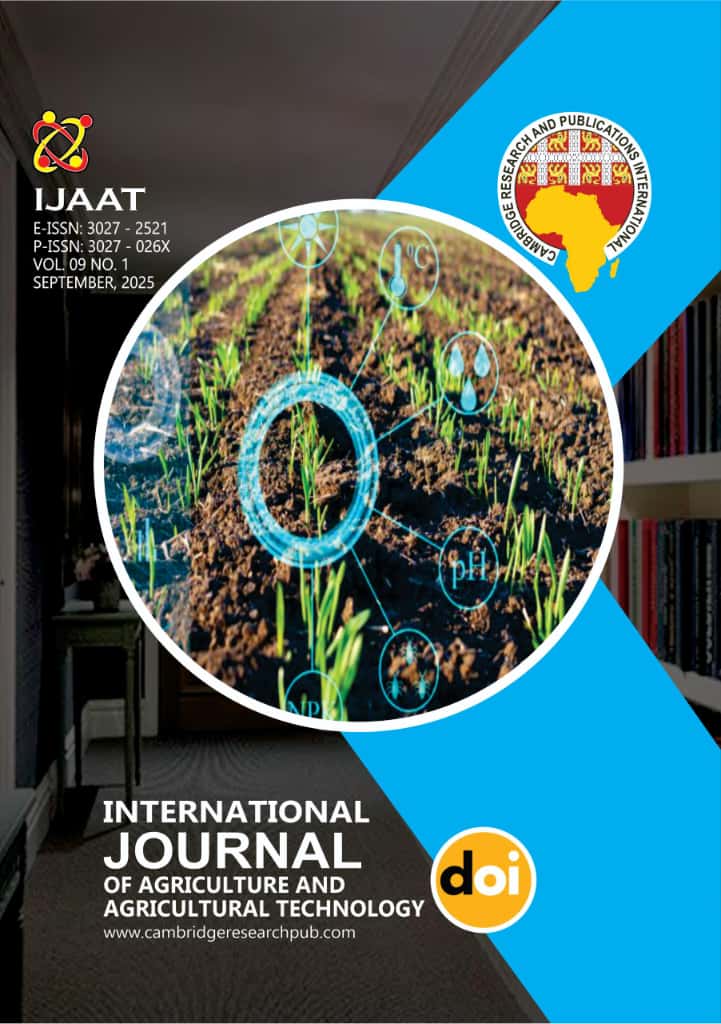MORPHOMETRIC ANALYSIS OF EGGS LAID BY TWO ECOTYPES OF ECOLOGICAL TORTOISES (Testudo marginata AND Testudo graeca) RAISED IN CAPTIVITY
Main Article Content
Abstract
Morphometric analysis of tortoise eggs in captivity involves measuring various physical characteristics to understand their size and shape variations. This study therefore focused on the morphological characteristics (number of eggs laid, egg weight, length, and width) of eggs laid by brown T. graeca for comparison with those laid by the popular, meatier and readily available black carapace ecotype. The tortoises used for this study were categorized on the basis of carapace colour into black and brown ecotypes. Sixty (60) tortoises, thirty each of the black and brown carapace ecotype were managed in captivity and the morphological characteristics of their eggs evaluated. The tortoises were groups in a mating arrangement of two similar phenotype to a pen and monitored for 52 weeks. Morphometric parameters evaluated include number of clutches and eggs laid, egg weight, length and width. Data collected were subjected to t test. Results showed that the brown carapace colour laid 116 eggs from 25 clutches, while the black ecotype laid 48 egg from 19 clutches. The mean egg weights were 16.57 g and 14.92 g for brown and black carapace ecotype respectively. The mean egg length and width for the brown carapace were 36.65 mm and 28.72 mm respectively. The corresponding values for the black carapace were 33.34 mm and 25.84 mm. The brown carapace ecotype morphometric parameters differed (p<0.05) significantly from another black carapace ecotype. In conclusion, there were significant differences between the black carapace and brown carapace ecotypes in all measured parameters.
Downloads
Article Details
Issue
Section

This work is licensed under a Creative Commons Attribution 4.0 International License.




